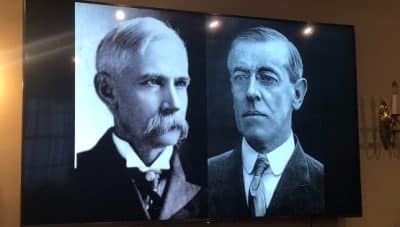
Carbon monoxide (CO) poisoning is responsible for more than 430 deaths per year in the U.S. According to the Centers for Disease Control and Prevention, it is also responsible for more than 50,000 visits to hospital emergency departments.
The center stresses that the risk for CO poisoning increases in winter and the highest fatalities are in the 65 plus age group. As temperatures fall, and remain low, people should be aware that furnaces, kerosene heaters, stoves, lanterns, portable generators, even warming up in an automobile in the garage, can all be a likely cause for CO poisoning.
What the experts say:
Mike Morgan, the owner of Morgan Inspection Services has been a home inspector in the Central Texas area since 2002, contributed the following advice:
What is carbon monoxide?
Anything that burns gasoline, natural gas, propane, kerosene and charcoal produces CO when burning. Appliances need to always be used in properly ventilated spaces, and automobiles should never be left running in the garage; otherwise dangerous amounts of CO can build up in the home. One reason that CO is so dangerous is that it is odorless, colorless, and tasteless, so you will not even know that is starting to build up in your home.
What is carbon monoxide poisoning?
Carbon monoxide poisoning occurs when there are high levels of carbon monoxide in the air. This CO is inhaled and begins to build up in the bloodstream. The CO then begins to replace the oxygen that the body requires to function properly and can cause serious tissue damage and even death.
What are the symptoms of CO poisoning?
CO is both odorless and invisible, but poisoning from it has distinct symptoms and people should seek medical assistance immediately when they are noticed. Everyone is susceptible, but the people who are most at risk are the elderly, those with respiratory problems, infants and unborn babies.
Common symptoms
The most common symptom is a persistent, severe headache and dizziness. This is usually also accompanied by nausea, vomiting, and fatigue. These symptoms will affect everyone in the same enclosed space and they disappear when any of the individuals go outdoors for fresh air.
Prevention of CO poisoning
CO poisoning can be prevented. People need to use common sense and take few simple measures.
Firstly, fire-related CO poisoning can be prevented if a home, boat or any other recreational vehicle has working smoke detectors installed. These need to be approved by recognized laboratories and there should be one on each level of the home. Their batteries need to be replaced at least twice a year, a good time to remember to do this is when you change the time on your clocks in spring and fall. Professional inspections are important, even if there are CO monitors installed.
Secondly, maintenance of all fire detectors and every other heating system and appliance in the home that works with gas, oil, wood or charcoal, must be carried out on a yearly basis. This includes any cooking equipment that doesn’t work with electricity. These are best done by qualified inspection and maintenance services who maintain the appliances and check the venting and chimney stacks.
Thirdly, if there has been a heavy snowfall, homeowners need to make sure that vents, fresh-air intakes, and exhaust stacks are free from any snow that may prevent the escape of the CO. Vents must also be kept free of all other debris, especially in winter.
Lastly, in winter, homes cannot be heated with a gas oven, and fireplaces and stoves must be vented if they are to have anything burnt in them. Cars, trucks, and motorcycles must not be run in a garage attached to the home, even if the door is open. Generators, charcoal grills, camp stoves, and other appliances run on charcoal and gasoline should never be used inside the home, garage or close to an open window. If a generator is operated, it should be located at least 20 feet from the home.
When to call for help?
The home must be evacuated and 911 must be called immediately if the CO alarm goes off. Everyone who was in the home must be accounted for and everyone must either go outside or gather at an open window.
If the home has gas appliances, the gas company must also be called in an emergency. Most importantly, if anyone has the symptoms of carbon monoxide poisoning, then 911 must be called or everyone must seek immediate medical attention.
No one should re-enter the home until it is safe and the levels of CO are reduced to a safe level.
Be prepared
Carbon monoxide is the silent killer and everyone needs to know what it is, and how to prevent appliance from causing it.
Morgan Inspection Services are the home inspection specialists who ensure that every home is ready and safe for its occupants through winter.










